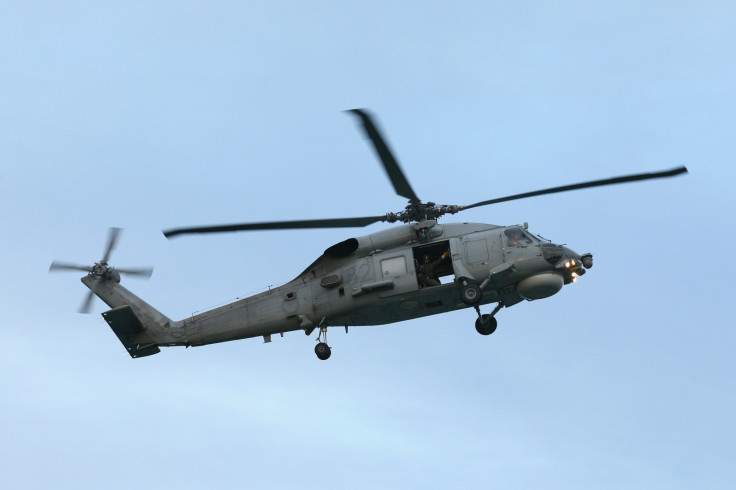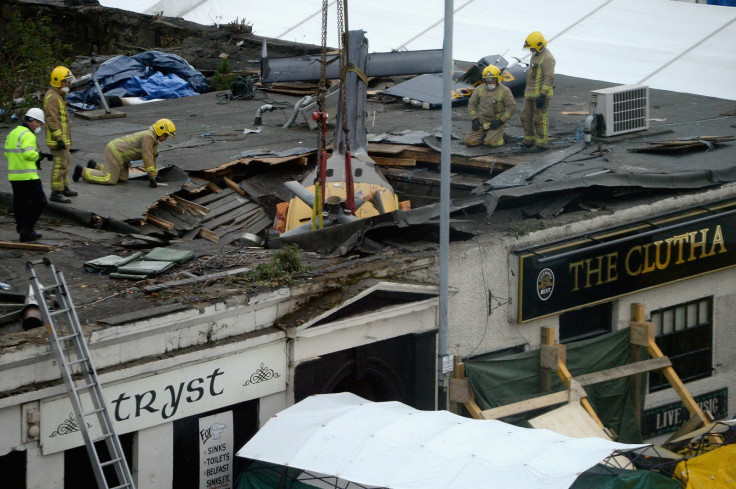East Yorkshire Helicopter Crash: How Dangerous Are Helicopters?

Two men have died after the private helicopter they were flying crashed off the coast of east Yorkshire. The aircraft was seen falling into the sea near Flamborough on Tuesday afternoon, and onlookers said they heard a "loud crack" before the aircraft ditched into the sea.
One witness has said the helicopter appeared to collide with the cliffs, but a police spokeswoman said the circumstances of the crash were not yet known. However, as more details emerge about the crash, the question remains – are helicopters safe?
According to the Civil Aviation Authority, there were 201 accidents between 2003 and 2013 in the UK, of which 27 were fatal. One of the most widely-reported incidents occurred last November, when a police helicopter crashed into a Glasgow pub on the north bank of the River Clyde. Ten people were killed and the cause of the crash remains unknown. The Air Accidents Investigation Branch found that both engines had flamed out – but it is not known why.
The aircraft involved in the crash this week was a private charter, travelling from West Lothian to Nottinghamshire. And overwhelmingly, the highest number of helicopter accidents involved pleasure flights – rather than police or military training aircraft. Between 2003 and 2012, there were 95 accidents involving private helicopters on pleasure flights, and none involving police aircraft.
However, the CAA told IBTimes UK that all helicopters flying in the UK have to comply with strict, high-level regulations – so no flight should be more dangerous than another.

"The UK has a good helicopter safety record. Helicopters fly many different types of operations - in some cases, such as offshore servicing of oil rigs, in hazardous situations that would be impossible for an aeroplane to undertake," a CAA spokesperson said.
"Like any aircraft, each helicopter type is subject to a thorough certification process before it can be brought into service.
"Each individual helicopter then needs its own 'certificate of airworthiness' and commercial operations are strictly regulated."
However, there are several potential areas where things can go wrong for helicopters.
Moving parts
Compared with planes, helicopters have more moving parts – and there is more potential for equipment to malfunction. A helicopter has a main rotor, a tail rotor and a drive shaft which runs along the length of the aircraft. If one of these breaks down, the helicopter can spin out of control. The fact that these parts are in constant motion means they can wear out fairly quickly.
Vibrations
Similarly, helicopters vibrate – and an uncalibrated aircraft can vibrate so much that it will shake itself apart. To reduce vibration, all helicopters have rotor adjustments for height and weight.
Training
Helicopters are tricky to handle, and as a result, the rate for accidents in helicopters when pilots are learning is twice the rate for planes. There are 12.69 accidents per 100,000 hours in helicopters, compared with 6.08 accidents per 100,000 hours in airplanes.
Overall, helicopters land and take off more frequently than planes, and this is when the vast majority of all aircraft accidents occur.
Risky operations
Most airplanes operate in a controlled environment. Yet helicopters are used to reach areas which planes cannot access. They can land in most places, making them ideal for military operations, search and rescue and medical evacuations. Operating in war zones can leave helicopters open to ground fire, as they fly at a lower altitude.
© Copyright IBTimes 2025. All rights reserved.





















